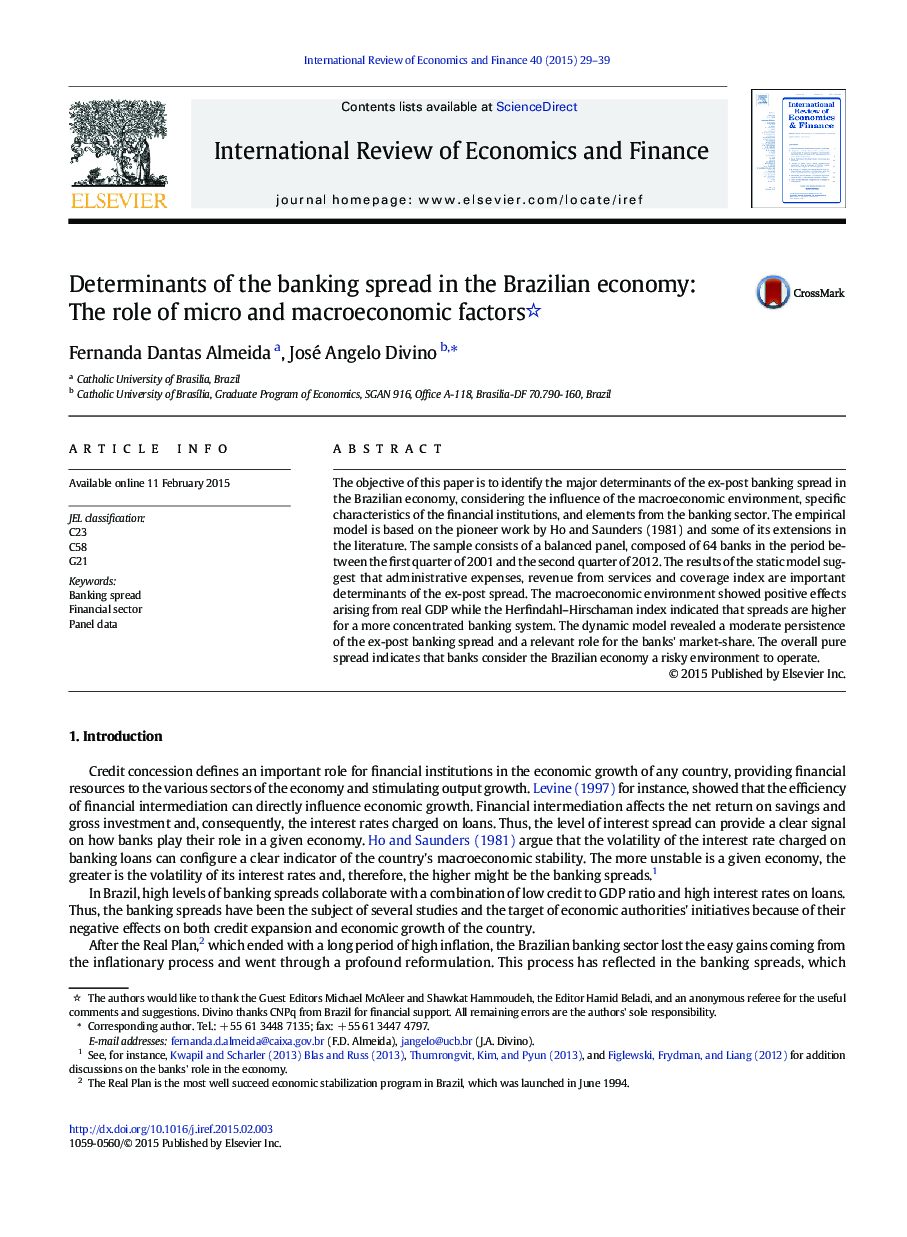| کد مقاله | کد نشریه | سال انتشار | مقاله انگلیسی | نسخه تمام متن |
|---|---|---|---|---|
| 5083373 | 1477802 | 2015 | 11 صفحه PDF | دانلود رایگان |

The objective of this paper is to identify the major determinants of the ex-post banking spread in the Brazilian economy, considering the influence of the macroeconomic environment, specific characteristics of the financial institutions, and elements from the banking sector. The empirical model is based on the pioneer work by Ho and Saunders (1981) and some of its extensions in the literature. The sample consists of a balanced panel, composed of 64 banks in the period between the first quarter of 2001 and the second quarter of 2012. The results of the static model suggest that administrative expenses, revenue from services and coverage index are important determinants of the ex-post spread. The macroeconomic environment showed positive effects arising from real GDP while the Herfindahl-Hirschaman index indicated that spreads are higher for a more concentrated banking system. The dynamic model revealed a moderate persistence of the ex-post banking spread and a relevant role for the banks' market-share. The overall pure spread indicates that banks consider the Brazilian economy a risky environment to operate.
Journal: International Review of Economics & Finance - Volume 40, November 2015, Pages 29-39